Vought F-8 Crusader Jet Fighter
The F-8 Crusader is commonly referred to as the ‘Last American Gunfighter’ amongst aviation experts. It’s a single engine air superiority jet fighter designed to take off and land from an aircraft carrier. Produced in 1955, the F-8 Crusader marks the departure from designing propeller fighter airplanes and the beginning of jet powered aircraft. This makes it a true middle child in American aviation.
Firepower:
Equipped with four 20 mm cannons, it inhabited the best features of both types of aircraft. As air-to-air missile technology was developing, the F-8 Crusader proved itself to be a formidable match against Soviet-made MiGs in Vietnam — even as the Air Force continually asserted that the era of dogfighting was over.
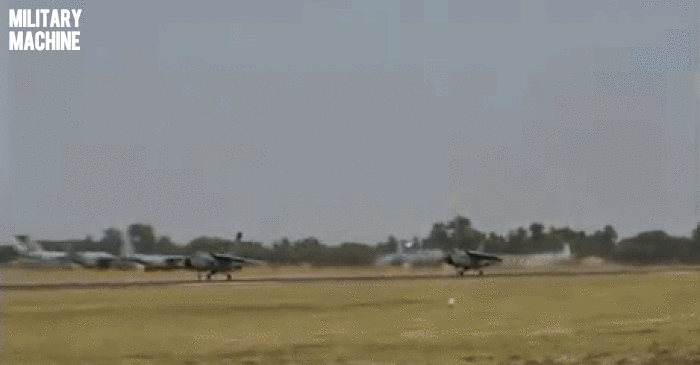
Aerodynamics:
This early era of fighter jet aircraft proved to be informative for future generations. The Vought F-8 Crusader had adjustable wing tilt. This allowed the wings to pull in closer by up to 7º. The F-14 Tomcat and the B-1 Lancer went on to have a similar design. Both would feature variable-swept wings with a far greater degree of movement. However, this proof of that concept is seen in the F-8.

F-8 Crusader vs F-4 Phantom:
Whereas the F-4 Phantom was designed purely to use air-to-air missiles to attain air superiority in an interdiction mission, the F-8 Crusader relied upon a mixture of its own native guns and missiles. Combined with deft maneuvering, it was not considered an easy aircraft to pilot, but it was admired by the pilots who flew it.
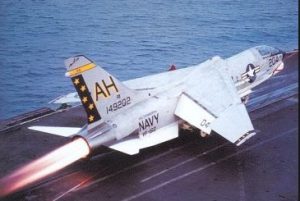
In the Vietnam War, the F-8 Crusader would prove its worth in earnest. According to figures tabulated during the Vietnam War, the F-8 Crusader shot down 19 MiGs for every one Crusader lost. This was astounding in comparison to the figures given for the next best naval jet fighter in theater: the F-4 Phantom. The F-4 Phantom proved that the “leading minds” in air superiority strategy didn’t have their heads on straight. The “brain tank” that envisioned the skies being solely reduced to air-to-air missile fire with absolutely no maneuvering or dogfighting were likely subtracted from any actual conflict themselves. The F-8 Crusader proved that point. Despite being almost a decade younger than the F-4 Phantom, the F-8 was one of the most feared aircraft by its enemies.
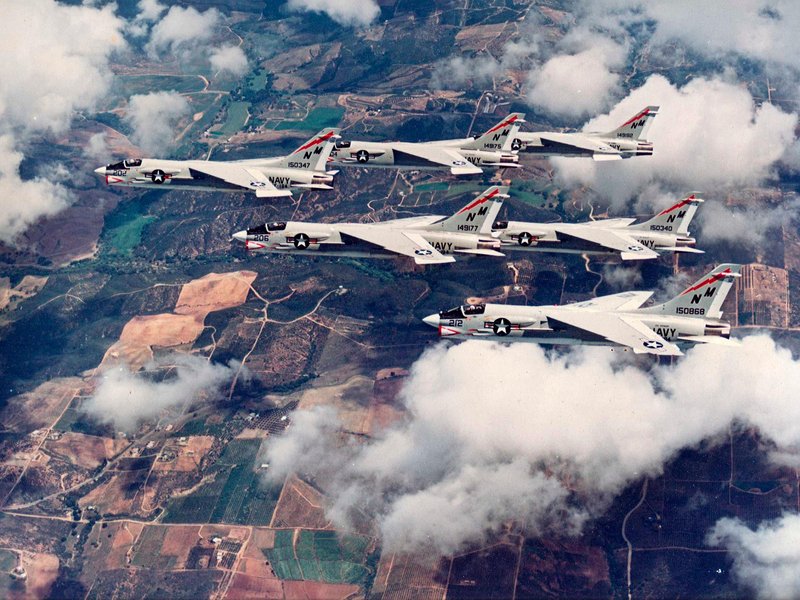
Air Superiority Role:
One isolated incident in May, 1972, proved just that. Returning back from mission, two F-8 Crusaders intercepted a North Vietnamese MiG on a bearing towards a naval carrier group. The carrier group initially sent two F-4 Phantoms but the Phantoms were called back. When the F-8 Crusaders of VF-211 descended to attack the MiG, the MiG pilot reportedly ejected out into the water. Amongst the Navy pilots, this was a testament to how deeply the F-8 Crusader was feared. The true cause of the bailout may never be known.
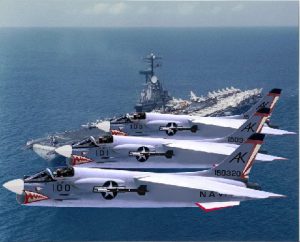
Later Development:
It’s ironic that despite the successes of the F-8, a future evolution of the F-8 was ultimately defeated by the F-4 Phantom. The formal nomenclature for the F-8 was the F-8U. Its proposed upgrade, the F-8U-3, was considered by a few sources the “best fighter that the Navy never built.” While the F-8U-3 was considerably faster, more maneuverable, and an all around better dogfighter than the F-4, the F-4 was created under the promise of a so-called future era of air superiority where missiles would reign supreme and no pilot would need to dogfight.
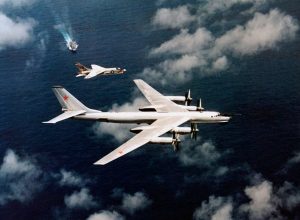
The Vietnam War proved that entire idea wrong. Unfortunately, by that point, the F-8 Crusader ceased all development and was merely stuck in its original incarnation. The F-8 Crusader still proved a highly acclaimed jet fighter despite being “obsolete”.
Powerplant:
The F-8 Crusader was powered by a lone Pratt & Whitney J57-P-20A afterburning turbojet. The J57-P-20A equipped in the F-8 Crusader was capable of generating up to 10,700 lbf (47.6 kN) of dry thrust.
See F-8 Crusader Specifications
| Height: 15 feet 9 inches (4.80 m) |
| Length: 54 feet 3 inches (16.53 m) |
| Wingspan: 35 feet 8 inches (10.87 m) |
| Max. Takeoff Weight: 34,000 lbs. (15,000 kg) |
| Maximum Speed: Mach 1.86 (1,225 mph, 1,975 km/h) at 36,000 ft (11,000 m) |
| Ferry Range: 1,735 mi with external fuel |
| Service Ceiling: 58,000 feet (17,700 m) |
| Crew: 1 |

